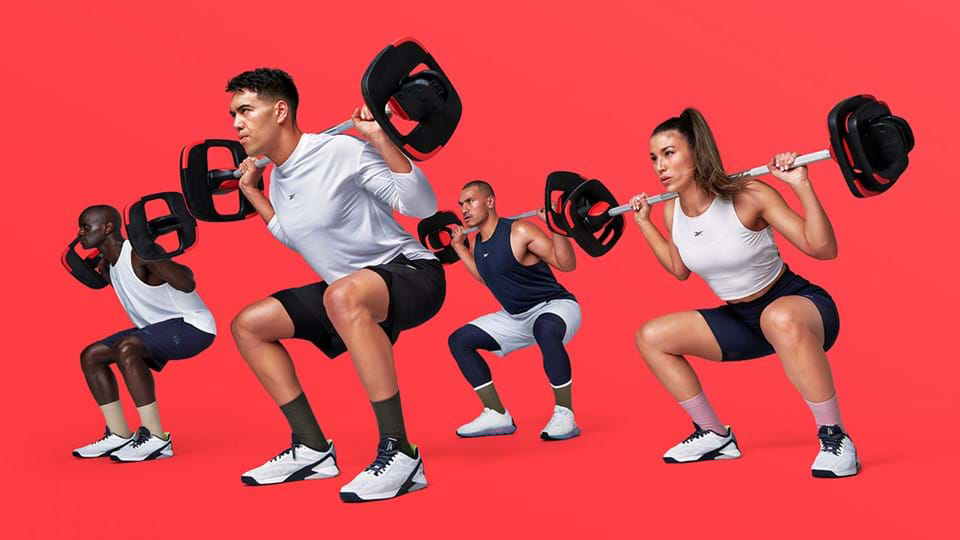[ad_1]
Data-driven Training is Trending
One of the newest trends to emerge in the world of resistance training is a focus on data-driven training—using technology to track our performance in real time.
“An example of this is tracking the velocity of our squat,” says Scott Logan, strength and conditioning coach at High Performance Sport New Zealand. “Technology can allow us to track the exact speed at which we’re moving, meaning we can target certain velocity ranges to give us specific desired adaptations.”
Logan continues: “For example, if we wanted to train for strength, we might be aiming for five sets of three squats at a peak velocity of 0.7 meters per second. That would place us in the strength range. However, if we were training for explosive power, we might be performing five sets of five squats at a peak velocity of 1.2 meters per second. Once we have the velocity range, then we set the weights. So rather than just focusing on lifting 120 kg (265 lb), you’re finding the weight that fits the range that is going to produce the specific adaptation you’re trying to achieve.”
Logan explains that we now have machines that allow us to see the live numbers we’re working with. “For example, I work with a Nordic hamstring machine that allows us to see how much force we’re generating through both legs. It encourages athletes to work harder and ensures we’re training both sides of the body equally—because they can see if they’re creating more force through (for example) their right leg.”
Fundamental Movements Are Here to Stay
You may have heard trainers talk about the “seven fundamental movement patterns.” Rather than focusing on isolated muscle groups, these movement patterns focus on training the body as one unit, meaning we recruit multiple muscle groups to develop total-body strength, power and stamina. These movements are:
-
- Squat
-
- Hip hinge (e.g., deadlift)
-
- Gait (running)
-
- Push (e.g., push-ups)
-
- Pull (e.g., bent-over row)
-
- Lunge
-
- Twist (e.g., woodchop)
“Essentially, every movement that we do is based around those seven fundamental patterns, or a combination of those seven fundamental patterns,” explains Logan. “They have really stood the test of time.”
“Closed kinetic chain exercises with free weights will always endure,” adds Dr. David Behm, a professor at the School of Human Kinetics and Recreation, Memorial University, Canada. “Exercises like squats, deadlifts, cleans, etc., can combine high-intensity stress, motor-coordination, balance and sport-specificity. They will never go out of style.”
Progressive Overload Delivers Results
“Progressive overload—gradually increasing the weight you’ve got on the bar or the number of reps you’re doing—has stood the test of time because if it’s done right, it works,” says Logan. “It’s endured as a training method because it’s how the body naturally adapts. The best example of this is pregnancy. Over nine months, the body experiences progressive overload as the fetus grows, and the body adapts to holding that extra weight. This is overload in its purest form—applying miniscule adaptations over a long period to increase strength and fitness.”
The history of progressive overload dates to the ancient Olympics, when Milo of Croton was said to have picked up and carried a baby cow every day from when he was a young boy. As the cow grew, he got stronger and stronger. Because the change was always so small, he was always able to adapt. Eventually, as a fully grown man, Milo was said to carry around a full-sized bull.
You don’t have to use weights to get the benefits of progressive overload. “You can absolutely progress with body-weight training,” explains Logan. “Whether that’s by adding an extra rep to your push-ups, or by giving yourself a mechanical disadvantage by taking both feet off the floor and putting them on the couch.”
You Don’t Need Leg Day
“This might be a bit controversial,” says Logan, “but I think that the bodybuilder-style training of leg day and chest/back day is, for most people, a waste of time. Yes, bodybuilders may need to train that way, but they’re doing it purely for size and the aesthetic, and because they’ve spent years training that way. If you’re coming to the gym three times a week to get a bit stronger, you don’t need to be doing 25 sets of chest and back. That’s not how athletes train and it’s not the most efficient use of your time.”
Logan believes “you can get way more out of your training by focusing on three- or four-movement patterns in one session, performing four to eight sets per pattern, and then doing that a few times a week. This then allows more time to add in other types of exercise, whether it’s playing a sport or cardiovascular training. Within that, one day might be a horizontal push and pull day, and the next could be a vertical push day for your upper body and then a glute and hamstring hinge focus. That’s how athletes train and it will maximize your advantages and benefits from the session.”
Biceps Curls on a Stability Ball are a Waste of Time
Thinking about how to get a bigger pump for your arms? Leave the Swiss ball out of it. “What would I like to see disappear?” asks Behm. “Performing open kinetic-chain exercises like biceps curls or similar exercises on stationary, unstable surfaces. Sitting on a Swiss ball or standing on a BOSU ball while performing biceps curls has no major advantages.”
Functional Training in BODYPUMP
Described as one of the trends transforming the fitness industry in 2021, functional training—exercises that help us perform movements in everyday life more easily—has been steadily growing in popularity over the last few years, and has been a lynchpin of LES MILLS™ programs such as LES MILLS CORE™.
For Glen Ostergaard, Program Director for BODYPUMP™, this is a crucial type of training that he has been incorporating into the workout over the past 12 months. “Right now, functional training is where it’s at for me,” Glen says. “I’ve been adding functional exercises into BODYPUMP such as push-ups mixed in with the bench press, or mountain climbers in with triceps extensions. Throwing full-body exercises into the mix means that when you get back onto the bench to do a more isolated exercise, it’s a whole lot harder and you get more out of it as a result. I’ve been very deliberate in the way I’ve introduced the functional moves and it’s where BODYPUMP is right now. I can see us staying in this phase for a while.”
You can experience the latest BODYPUMP workouts at a club near you or use LES MILLS+.
Technology is the Future
What’s on the horizon for the future? Both Behm and Logan predict an increased reliance on technology.
“I imagine workouts will be far more linked to live data,” says Logan. “For example, our heart-rate variability from the day before could affect our programming. If we look at velocity training, we could see what speed we’re moving at on a screen in front of us, and if we’re not hitting our target velocity, we’d adjust our weights accordingly. Technology is going to continue to make our training more and more efficient. There will also be wider availability of the technology that is currently only available for professional athletes; it will become more accessible to the public, enhancing the way all of us train.”
Behm agrees: “I think we’re going to see more personal feedback systems that monitor load, intensity and volume of work, so an individual can see within a training session if their intensity is dropping. Over many sessions, this will inform whether their workload is going down or increasing.”
Scott Logan
Scott Logan is the strength and conditioning coach for the New Zealand men’s hockey team the Black Sticks. A former international water polo player for NZ, he is the founder of Scott Logan Conditioning, which specializes in online personal training offering accessible programs and advice that are normally only available to elite and pro athletes. Scott has presented at conferences all over the world and throughout NZ. He also teaches Strength and Conditioning accreditation courses and provides seminars to athletes, teams and other trainers.
Dr. David G. Behm
Dr. David Behm works at the School of Human Kinetics and Recreation, Memorial University of Newfoundland, where he does research in Sports Science and Exercise Physiology with a focus on neuromuscular responses and adaptations. Dr. Behm has worked at Memorial University of Newfoundland since 1995 teaching more than 18 different courses and serving as Associate Dean / Chair of the School of Human Kinetics and Recreation Graduate Studies for approximately 10 years. His TEDx talk on stretching is an attempt to clarify the confusion regarding stretching research for the public.
Glen Ostergaard
Glen Ostergaard was born with a love of fitness. Before he even entered this world, his father was lifting weights in an old garage with his friends. As Glen grew up, he spent hours watching his dad and his mates training, and he knew he wanted to follow in those footsteps. At 16 his father gave him his first training program: three times ten reps of all the basic exercises. From there Glen moved into competitive bodybuilding, before progressing to powerlifting and CrossFit. He is based in Auckland, New Zealand, where he is Program Director for BODYPUMP, RPM™ and LES MILLS SPRINT™.
This piece originally appeared at lesmills.com. If you have any questions please contact emma.hogan@lesmills.com
Stand out as a Specialist

[ad_2]

